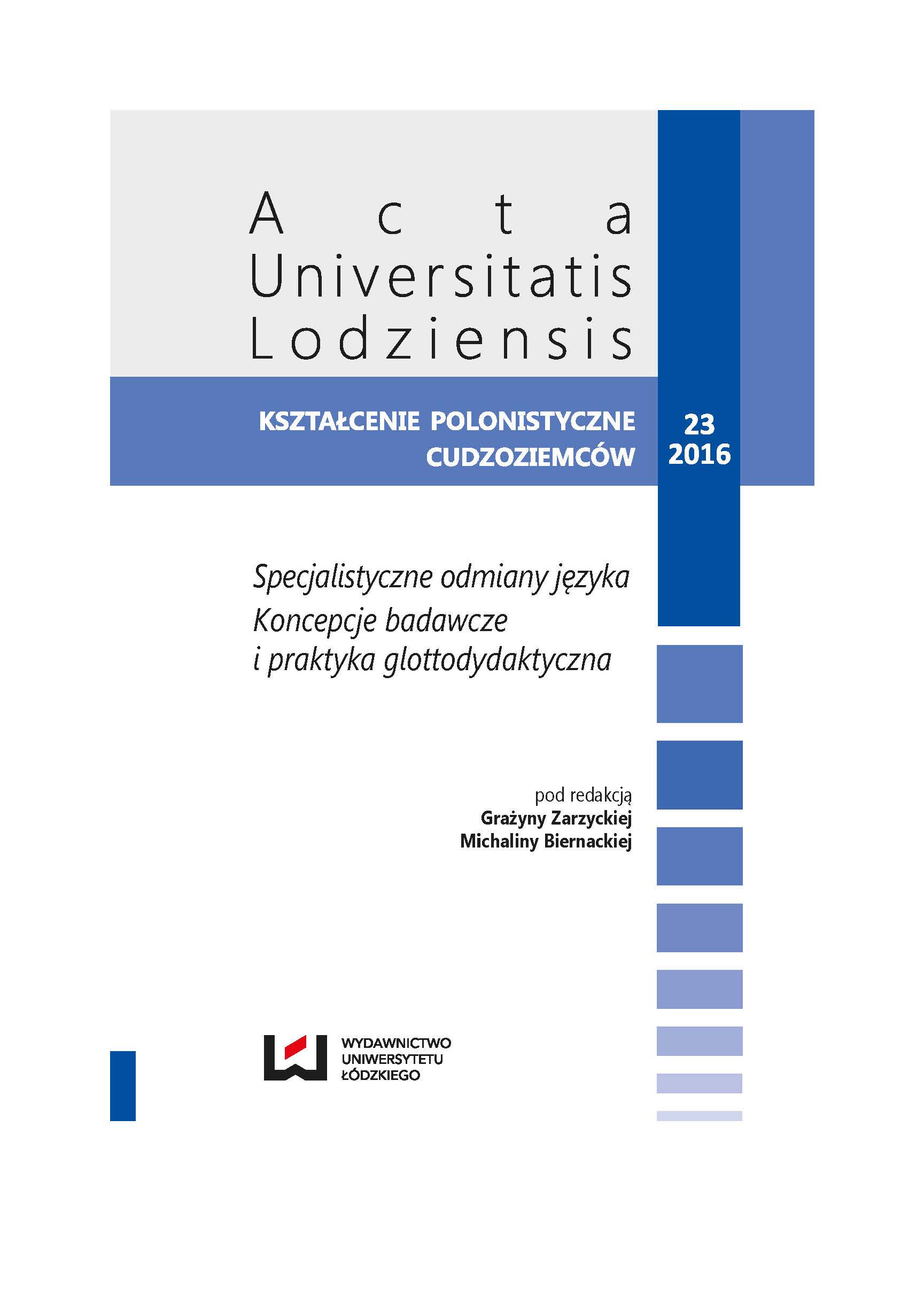Polska terminologia językoznawcza w węgierskiej tradycji polonistycznej
Polish terminology in Hungarian reserch and language teaching
Author(s): Anna Seretny, Wiesław Tomasz StefańczykSubject(s): Social Sciences, Language and Literature Studies, Education
Published by: Wydawnictwo Uniwersytetu Łódzkiego
Keywords: terminology;terms;Polish language;Hungarian language;language description;language learning/teaching;terminologia;termin językoznawczy;język polski;język węgierski;opis struktury języka
Summary/Abstract: Since Polish and Hungarian belong to different language families, they are typologically and genetically different. Polish is a member of the Indo-European family. It is a Slavic and fusional language while Hungarian, a member of the Uralic language family, is Finno-Ugric, agglutinative one. Grammatical categories of both languages differ considerably, some phenomena which are specific to one of them, do not exist in the other. In Hungarian, for example, nouns do not have grammatical gender, there are no collective numerals, verbs do not have aspect, and nouns, though inflected, have different cases. Hungarian linguists thus so as to describe Polish language structure had to coin terms which would refer to grammatical categories/phenomena nonexistent in Hungarian. The article presents these terms, analyzing their nature and structure.Polszczyzna i język węgierski są językami odrębnymi zarówno pod względem genetycznym, jak i typologicznym. Język polski jest językiem indoeuropejskim, słowiańskim, fleksyjnym, natomiast węgierszczyzna jest językiem uralskim, ugrofińskim, aglutynacyjnym. W związku z tymi odrębnościami część kategorii gramatycznych w pełni się nie pokrywa. Dotyczy to zwłaszcza nieistniejącego w węgierszczyźnie rodzaju gramatycznego, liczebnika zbiorowego, przyimka, aspektu czasownika, a także w odmienny sposób wyrażanego przypadka. W węgierskim językoznawstwie polonistycznym istnieją usankcjonowane tradycją terminy nazywające wskazane kategorie. Niniejszy artykuł jest poświęcony ich analizie.
Journal: Acta Universitatis Lodziensis. Kształcenie Polonistyczne Cudzoziemców
- Issue Year: 2016
- Issue No: 23
- Page Range: 47-57
- Page Count: 11
- Language: Polish

